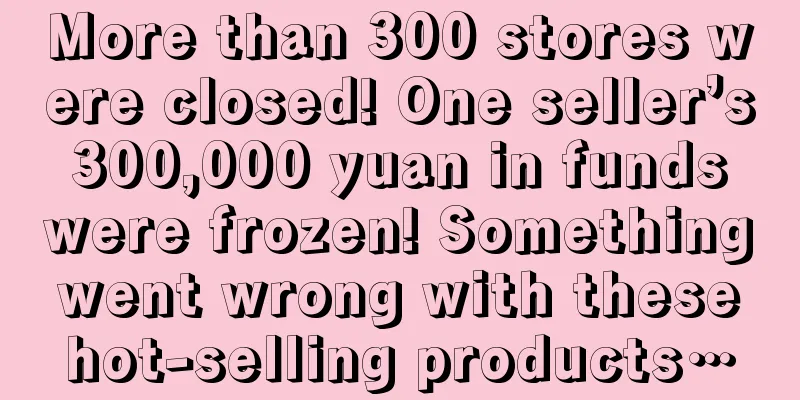|
Do you feel that selling on Amazon is getting harder and harder? You are not alone. As many consumers buy products on Amazon, more and more sellers are flocking to Amazon, resulting in increasingly fierce competition and making it increasingly difficult for small and medium-sized sellers to do business.
In addition, the line between whether Amazon is a sales platform or a competitor to retail brands has become increasingly blurred. That’s right, Amazon sellers not only have to compete with the influx of new sellers, but also with Amazon’s own brands. Amazon in 2020: A Red Sea in a Red Sea Third-party sellers on Amazon have become saturated, so many sellers are looking for new ways to expand into new categories and subcategories. Among the top 2,400 sellers, there are at least 50 brands. New category expansion usually occurs with private label sellers. In 2019, 62% of Amazon sellers had private label labels in their product catalogs. In addition, Amazon cut off cooperation with a large number of wholesale suppliers in early 2019. Since then, more and more supplier sellers have transformed into third-party sellers, which has intensified the competition among third-party sellers. In addition, although Amazon has closed its Chinese site, there are still many Chinese sellers on Amazon, and they are distributed on different sites. Chinese sellers usually do not have middlemen to make a profit, but sell directly to Amazon consumers, so they often win sales in the end with their low price advantage. What is Amazon's competitive environment like? Look at the following data:- In 2019, Amazon has 15 sites around the world: the United States, Canada, the United Kingdom, Germany, France, Italy, Spain, India, Japan, Australia, Brazil, Mexico, the United Arab Emirates, and Singapore;
- Since January 1, 2017, 3.3 million new sellers have joined Amazon, of which more than 1 million have joined Amazon US.
- There are 2.8 million active sellers on all Amazon sites, including 1.1 million active sellers on the US site;
- The number of sellers with sales exceeding $100,000 has increased by 180,000 since 2017;
- 47% of Amazon's top sellers are located in the United States, and China accounts for 38%;
- 93% of international sellers offer Prime shipping, compared to 74% of US sellers.
- More than 85% of Amazon's top sellers offer premium delivery services for more than half of their products;
- There are nearly 2 million brands on Amazon, but only 10% of them are among the top 100 best-sellers in Amazon's tens of thousands of categories.
- As of 2019, Amazon has 400 private brands covering 23,000 products.
How to stay competitive on Amazon?
Although many sellers say that it is difficult to do business on Amazon, it is still an opportunity for e-commerce. Only if sellers hone the right operating methods and flexibility can they gain a foothold and move forward. To stay competitive and make money on Amazon, you need to constantly adapt and upgrade your operational strategies to adapt to Amazon’s dynamic market. One way to do this is to sign exclusive distribution agreements with suppliers or establish private label production lines to differentiate your supply chain and expand into relatively unsaturated niche markets. With private label, you are the only authorized distributor of the product, which allows you to avoid competing with other sellers for the buy box and avoid penalties for being unauthorized or violating MAP policies. More than half of Amazon sellers’ product catalogs are private label products, but Amazon private label sellers also face many challenges. To determine if you are suitable for private label, seize opportunities, fill gaps in your business, and where you can optimize, you must first analyze the competition. By analyzing indicators such as reviews, pricing, keywords, and sales data, you will be able to draw more precise survey results and make more accurate purchases, optimize campaigns and pricing strategies, and track performance and profits more effectively. To effectively analyze competition on Amazon, you first need to have a comprehensive understanding of the competition that exists on Amazon and how these competitors and factors affect your demand, pricing, search rankings, and market share. Competitors on Amazon or any other selling platform can be divided into:- Direct competitors include sellers who sell the same products or meet the same needs of consumers. On Amazon, direct competitors are usually sellers who compete with you for the Buy Box, as well as sellers with similar listings that compete for sales. In addition, direct competitors also include brand sellers of the same type. For consumers, the main advantage of brand sellers is brand guarantee and reputation.
- Indirect competitors are sellers who do not sell the same products as you and do not compete with you for the buy box. However, they can still meet the needs of consumers and indirectly affect the demand for your products. Branded products, private label products, and single seller SKUs will not compete with you for the Buy Box. Indirect competition exists in the categories you sell and other categories, which may inadvertently affect your product prices, search result position, exposure, conversion rate, etc.
To further understand the competition, you need to understand and pay attention to the following product types to optimize product pricing and marketing plans:- Competitive products : Competitive products, as the name suggests, are products of competitors that can meet the same needs of the same consumers, but the final customer's purchasing preference is influenced by factors such as price or brand. Example: Nike sports shoes vs. Adidas sports shoes.
- Complementary goods : Complementary goods are not identical goods. Usually product A is related or paired with product B. The demand for one product affects the demand for the other. Example: a special lamp and its corresponding light bulb.
- Substitute products : Substitute products are not necessarily identical but serve the same purpose and are considered identical, similar, or comparable in the eyes of the consumer. Example: Peanut butter vs. almond butter.
What competitive data should you track? Review : If you are considering expanding your product catalog, it is recommended to consider the top 5 main product keywords that appear in the search results. These are the keywords that consumers often use to search. If there are more than 300 reviews for each product in the search results, it is best not to select the product. The number of reviews also reflects the seller's monthly sales. Selling more products can get more reviews. Keywords: To get consumers to buy your products, they must first find your products. Use as many relevant search terms as possible to optimize exposure, relevance, and conversion rates. The quality of your product listing, including the use of keywords and product descriptions, should be continuously optimized to increase your competitive advantage. Sales data : To understand product demand, you need to analyze and summarize it in daily operations. Analyze competitor sales data, such as ASIN, similar categories, and brands, to analyze whether the product is worth adding to your product catalog and the conversion rate of the product. Monitoring competitor categories and ASINs will help you decide what to sell next, create more appropriate product bundles, and better grasp the market trend. Use dynamic pricing strategies On Amazon, price is king . Price is the most important factor driving consumer purchases, with 82% of consumers considering product price when selecting products. Dynamic pricing means constantly adjusting product prices to reflect current market trends and real-time supply and demand. The more competitive the market, the more frequent price changes. On Amazon, prices change every few minutes due to fierce competition among sellers, consumer demand, and elastic prices. Implementing a dynamic pricing strategy is the key to staying competitive on Amazon. As the Amazon market becomes increasingly saturated, more and more sellers are constantly adjusting prices to adapt to the market environment. Sellers should understand the pricing strategies of competitors to avoid price wars and gain a foothold in the market of their own categories. Specific pricing strategies should be formulated and implemented based on sales patterns. If you are considering or have already started your own brand, you should understand the importance of dynamic pricing and know how to implement a dynamic bidding strategy. How do private label brands implement dynamic pricing?
As big brands and private label sellers continue to flock to Amazon, it is becoming increasingly difficult for sellers to identify their competitors and develop effective product marketing strategies. Understanding the competitive landscape is the key to making successful decisions. 51% of Amazon brand sellers believe that competitive pricing is the most critical factor in promoting sales. Amazon is a dynamic market that is constantly changing. Many brands adjust product prices monthly or quarterly. Therefore, sellers who are slow to adjust prices are also slow to adapt to changes in the market environment and are likely to gradually lose money. So how should private label brands formulate dynamic pricing? First, consider what pricing data you can collect? Do you understand how your competitors price their products? Refer to how your competitors price their products, complementary products, and substitute products, and analyze the patterns along the correlation to determine your own effective price point. For example, although desk lamps do not compete directly with complementary products such as light bulbs in terms of cost, the market demand for desk lamps will definitely have an impact on the effective price of light bulbs. If there are too many desk lamps on the Amazon platform, it will lead to an increase in demand for specific light bulbs. At this time, sellers can increase the price and profit of light bulbs without any negative impact. The core of dynamic pricing is to win the Buy Box, but it is not easy to win the Buy Box. The Buy Box is a key factor affecting the sales of Amazon sellers. Its essence is to check the competitors on Amazon, compare different product offerings of the same product, and determine which offering can provide customers with the best buying experience. There are many factors that affect whether you can win the Buy Box, including your shipping method, shipping time, inventory balance, customer feedback, etc., but the most important thing is the product price. Given the increasing market saturation, sellers must understand the pricing strategies of competitors and be prepared to adjust prices. When researching competitors, many sellers use algorithmic pricing solutions to find data and suggestions on how to beat competitors. Sellers can use tools to reprice products and ensure that the product is not priced too high or too low. 90% of Amazon sellers who have used repricing tools believe that repricing tools are more or less helpful. With advanced algorithmic pricing tools, sellers can use data and adjust prices in real time according to market changes. Amazon sellers often misunderstand that products must be the lowest price to get the Buy Box. However, in fact, sellers who use repricing tools to dynamically adjust prices may be more advantageous. Although rule-based repricing tools only consider competitor prices and ignore other indicators, algorithmic repricing tools make objective judgments based on big data and finally produce highly accurate results. To win the Buy Box, you must first eliminate the misunderstandings about the Buy Box. Here are the most common fallacies about the Buy Box: 1. As long as you lower your price than your competitors, you can win the Buy Box. Studies have shown that although lowering prices can increase the chances of getting the Buy Box, it does not guarantee that you will get the Buy Box. Blindly lowering prices will only trigger a price war and ultimately hurt profits. 2. If your price is within 2% of the current seller’s price, the Buy Box will always be yours within a certain period of time. Although the phenomenon of rotating the Buy Box to sellers does exist, there is no evidence to support this theory. 66% of consumers search for new products on Amazon, however, less than half of them only browse the products on the homepage. It can be seen that product exposure is crucial for sellers to maintain competitiveness and improve product conversion rates. However, as the number of brands and sellers continues to increase, it is becoming increasingly difficult to increase product exposure. In fact, placing Amazon ads can not only gain a competitive advantage, but is also necessary for marketing. In 2019, Amazon continued to update advertising metrics and advanced features, including the "new-to-brand" metric, Sponsored Display, and product promotion advertising capabilities to help sellers improve their competitive advantage. Sellers can reduce CPC costs based on existing advertising features and explore new potential keywords for product promotion ads to obtain more traffic at a low cost. To stand out from the competition, you have to run your ads in an orderly and consistent manner by category, brand or best-selling. Otherwise, you run the risk of duplicating ads, with one ad created for the brand and another for the category. In addition, when optimizing PPC advertising keywords, you need to understand how to create different ad groups for keywords with different attributes. The larger the seller's product catalog, the more keywords there are. For example, if you sell shirts, "shirt" is a relevant keyword. But depending on the type of shirt you sell, the specific relevant keywords may vary. Maybe "men's shirt" is a relevant keyword, or "men's tank". You need to monitor your PPC ads regularly, learn to optimize keywords, and take advantage of long-tail keywords. How to compete with Amazon's private label brands
More and more brand sellers have adjusted their marketing strategies, including Amazon. They also have to consider Amazon's growing portfolio of private labels, which already has more than 400 brands and 23,000 products in 2019. 66% of Amazon brand sellers list competition with the company's own brands as their top concern. In order to compete with Amazon's own brands, you must have your own brand and product catalog. Sellers are advised to take necessary measures to increase product traffic and conversion rates to ensure your brand's ranking in the category. Reference suggestions:- Analyze product KPIs down to each SKU. If you have a large product catalog, it is recommended to focus on the best-selling products. The analysis includes advertising optimization, etc., to ensure that you use all angles to improve conversion rate.
- Monitor your campaigns. You can run targeted campaigns to acquire new customers and secure your position in the category.
- Focus on Amazon’s private label products, track their ad placements and organic rankings, and compare your performance gaps.
- Check the sales and traffic conversion analysis reports regularly. Sellers should master data such as total order sales, number of order sales, total number of order products, average sales, average selling price, and user views to better keep up with sales trends and traffic peaks or valleys.
In addition, sellers often have to compete with Amazon's own brands for the Buy Box, and often lose to Amazon's own brands. The Buy Box considers Amazon's own brands as sellers with perfect customer experience indicators. So, if the seller has near-perfect customer indicators or low landing costs, then the seller will be able to share the Buy Box with Amazon's own brands. Even if the seller's price is lower, it can still beat Amazon's own brands to win the Buy Box. The so-called near-perfect performance indicators are that the seller's order defect rate should be kept below 1% and the rating should be kept above 95%. As Amazon's market share gradually increases, brands and third-party sellers need to work with Amazon and its platform to achieve win-win results, rather than against it. As the Amazon platform continues to grow, traditional distribution models and requirements have become increasingly complex. Sellers need to understand their competitors and Amazon’s dynamic market, keep up with market trends, and adjust their strategies in real time in order to gain a foothold on Amazon. Statement: When reprinting this article, the title and original text must not be modified, and the source and original link must be retained. |










